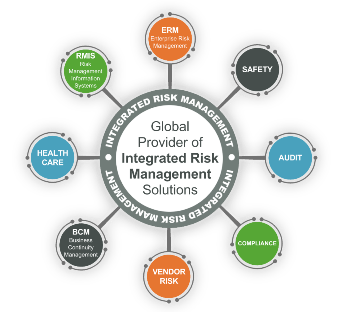In the dynamic realm of business operations, Governance, Risk, and Compliance (GRC) and Integrated Risk Management (IRM) have emerged as essential frameworks for navigating the complexities of modern organizations. While both disciplines share a common focus on risk mitigation and enhancing organizational performance, they differ in their scope, approaches, and integration with overall business strategies. This comprehensive guide delves into the intricacies of GRC and IRM, elucidating their key distinctions, operational mechanisms, and applications in various business contexts.
GRC: A Holistic Approach to Governance, Risk, and Compliance
GRC encompasses a broad set of principles, practices, and tools designed to ensure that organizations operate in a manner that aligns with their regulatory obligations, internal policies, and ethical standards. It encompasses three interconnected pillars:
Governance: Establishing clear structures, processes, and decision-making frameworks to guide organizational behavior.
Risk Management: Identifying, assessing, and mitigating potential threats to organizational objectives and performance.
Compliance: Adherence to external regulations, industry standards, and internal policies to avoid legal and financial repercussions.

IRM: A Unified Approach to Risk Management
IRM, on the other hand, represents a more comprehensive and integrated approach to risk management, encompassing the identification, assessment, prioritization, and mitigation of risks across the entire organization. It seeks to embed risk management into the fabric of the organization’s decision-making processes, ensuring that risks are proactively considered and addressed at all levels.

Key Distinctions between GRC and IRM:
| Feature | GRC | IRM |
|---|---|---|
| Primary focus | Governance, risk, and compliance | Risk management |
| Scope | Narrower, focusing on specific regulatory compliance requirements | Broader, encompassing all types of organizational risks |
| Approach | Reactive, addressing risks as they arise | Proactive, embedding risk management into decision-making |
| Integration | Often siloed within compliance or risk management departments | Integrated into overall business strategies |
Applications of GRC and IRM:
| Industry | GRC Applications | IRM Applications |
|---|---|---|
| Finance | Ensuring compliance with financial regulations, managing credit risk, and preventing fraud | Identifying and mitigating market risks, operational risks, and reputational risks |
| Healthcare | Adhering to patient privacy regulations, managing healthcare data security, and maintaining quality standards | Mitigating clinical risks, regulatory risks, and supply chain risks |
| Technology | Protecting intellectual property, complying with data privacy laws, and ensuring cybersecurity | Identifying and addressing cyber threats, data breaches, and operational disruptions |
GRC vs. IRM: A Comparative Glance
| Feature | GRC | IRM |
|---|---|---|
| Scope | Compliance-driven | Risk-driven |
| Approach | Reactive | Proactive |
| Integration | Siloed | Integrated |
| Focus | Regulatory compliance | Enterprise-wide risk management |
Conclusion: Embracing a Risk-Intelligent Culture
In the complex business landscape, GRC and IRM play crucial roles in ensuring organizational resilience, sustainability, and ethical conduct. GRC provides a structured framework for governance, risk management, and compliance, while IRM promotes a proactive and integrated approach to risk mitigation. By embracing a risk-intelligent culture and implementing effective GRC and IRM strategies, organizations can navigate challenges, seize opportunities, and achieve long-term success.